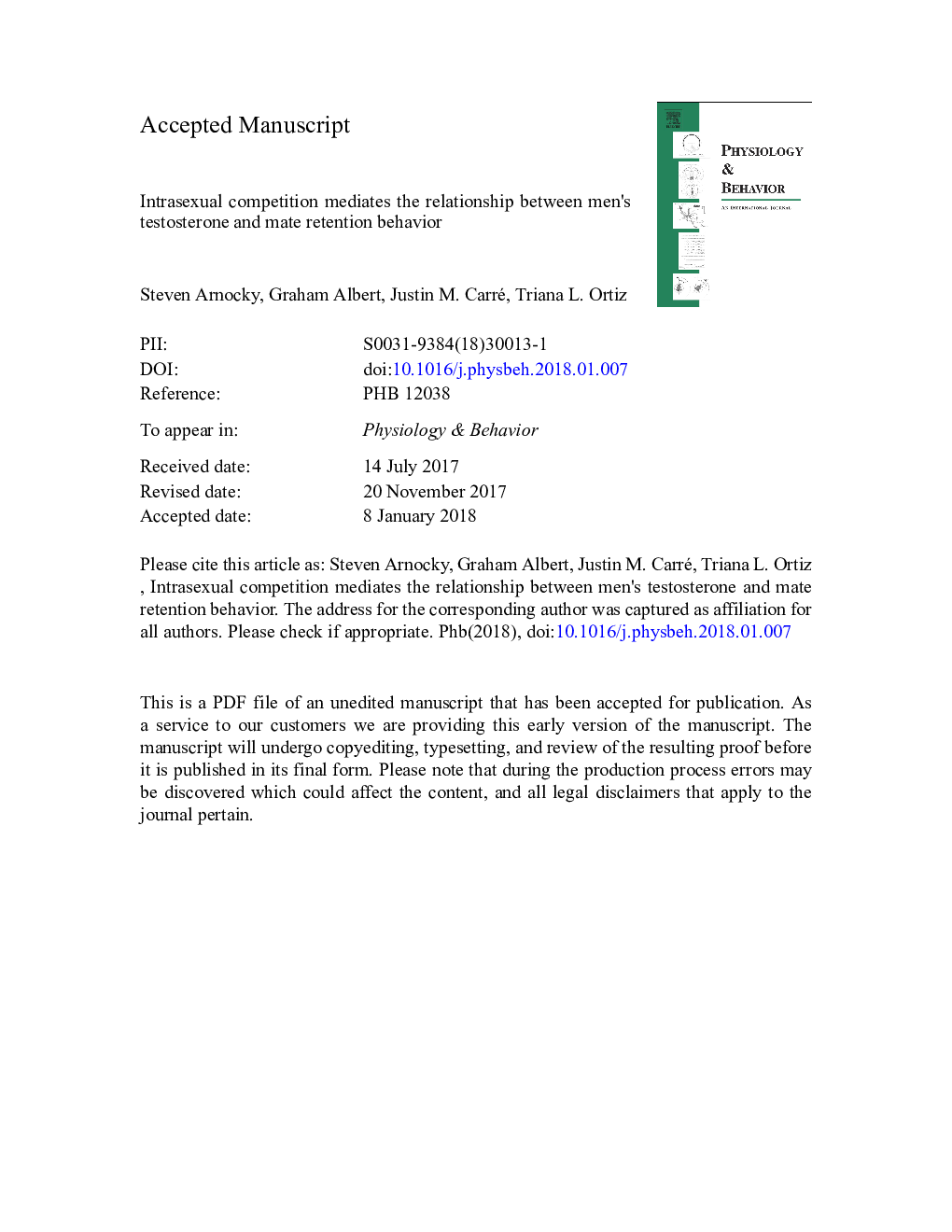| Article ID | Journal | Published Year | Pages | File Type |
|---|---|---|---|---|
| 8650642 | Physiology & Behavior | 2018 | 30 Pages |
Abstract
Previous research has established a link between testosterone concentrations in males and their mating effort as it relates to their mate seeking behaviors. However, very little research has analyzed how variability in basal testosterone concentration of males affects their mating effort once they have secured a romantic partner. In a sample of undergraduate men, the relationship between testosterone, intrasexual competitiveness, and mate retention behavior was examined. Results showed that higher basal testosterone predicted more self-reported mate retention effort. This relationship was mediated by intrasexual competitiveness, such that high T men reported more intrasexual competitiveness, which when included in the model predicted mate retention, and reduced the initial T - mate retention relationship to statistical non-significance. When examined separately, this mediation effect applied specifically to cost-inflicting, rather than benefit-provisioning, mate retention behavior. These are the first findings to link T to mate retention effort and to identify intrasexual competitiveness as a mechanism which might account for this relationship.
Related Topics
Life Sciences
Biochemistry, Genetics and Molecular Biology
Physiology
Authors
Steven Arnocky, Graham Albert, Justin M. Carré, Triana L. Ortiz,
